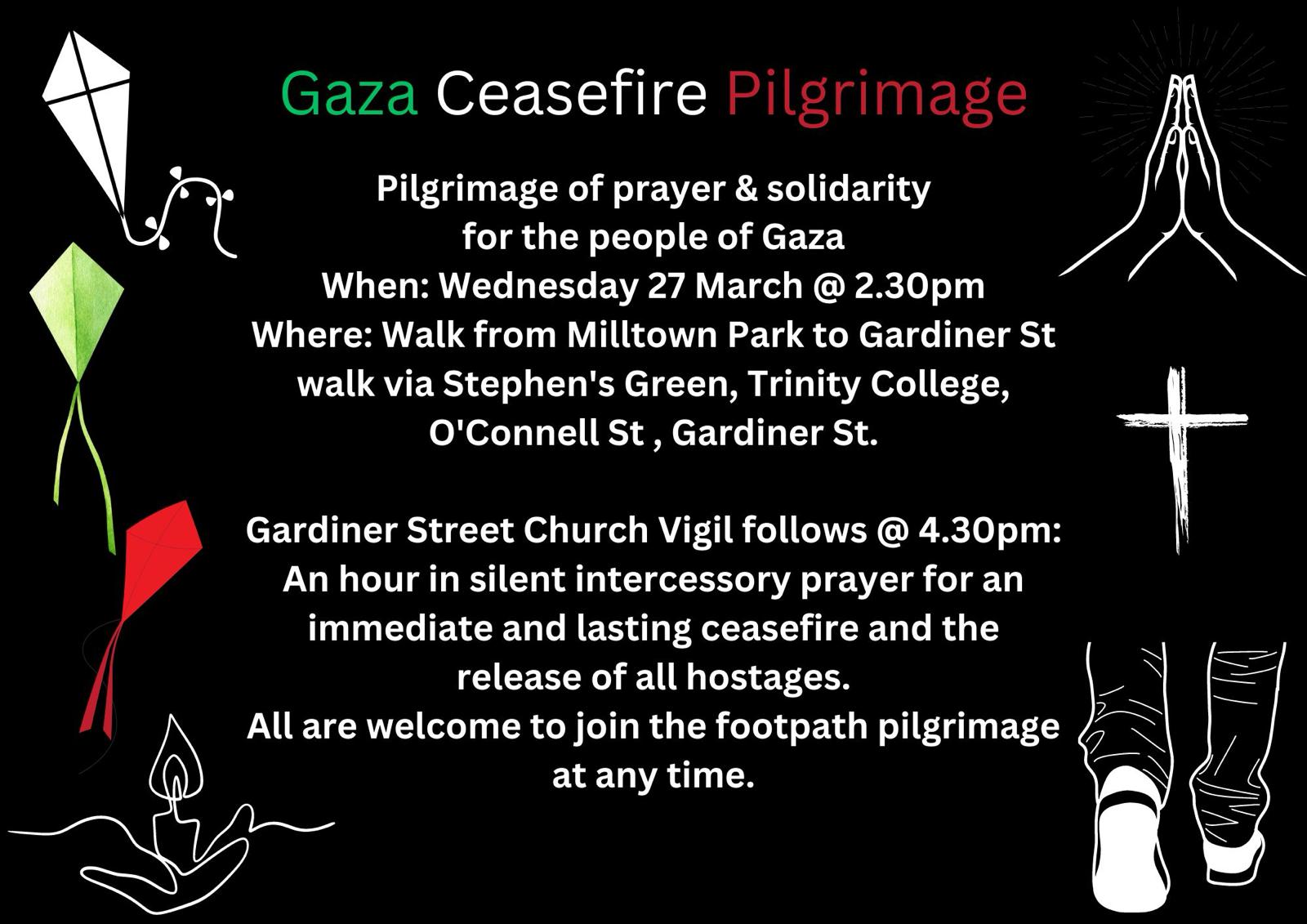
A guest post from a friend of the Jesuit Centre for Faith and Justice, Toni Pyke. Toni will be joining many from the Jesuit communities and wider afield for a peace pilgrimage of prayer and solidarity, walking from Milltown to the St Francis Xavier church on Gardiner Street Upper on Wednesday March 27, starting at 1430.
When I lived in Uganda, I took a trip to Kidepo National Park, located in the far north eastern region of Uganda known as the Karamoja region, which shares its borders with South Sudan and Kenya’s Rift Valley. Accustomed to the lush green landscape that covers much of Uganda, I was mesmerised by the scorched, arid, vastness of this region and stunned by the intensity of the experiences of poverty by those living within its boundaries. Karamoja is the most marginalised region in the country and home to some of the world’s poorest people.
While travelling through Karamoja, I stayed a night in a town called Kotido to visit the Mill Hill missionaries stationed at the Catholic parish in Panyangara. During the visit, I noticed scores of women and children walking for many miles carrying heavy loads of millet and sorghum on their heads that had been donated by the parish. An image that has continued to haunt me during and since my visit, is that of an elderly Karamojong woman seated on the ground separating leaves from the branches of a tree. I was enlightened by my guide Fr. Sylvester, that this woman and her family had no access to food. When food is no longer available, women turn to boiling leaves to alleviate the pangs of hunger. During my visit, it was hot and dry with the rivers, streams, lakes and other natural water sources parched. There were few leaves left on the trees, and no signs of the rains to come. I had spent almost 2 decades living and working in different African countries before my visit to Karamoja, yet this was my first real encounter with the face of acute hunger. It is not an image I could ever want to forget.
This morning as I opened my laptop, that memory resurfaced. A new UN backed report by the Integrated Food Security Phase Classification (IPC) has revealed that “famine is imminent” in northern Gaza, where some 1.1 million people will face “catastrophic levels of hunger” in the next 6 weeks. The people in Gaza, we are told, are eating grass to survive. Adding to this crisis is the continued denial of the necessary humanitarian support by land that would reach those in most need and avert a potentially irreversible disaster. I was deeply scared by the words of the head of UNWRA, Philippe Lazzarini who said: “This man-made starvation under our watch is a stain on our collective humanity.”
I am numbed by the horror that I see unfolding in Gaza since the Hamas attack on Israel nearly 6 months ago. I am stunned by the arguments and counter-arguments that continue to blur the reality on the ground that innocent children, women and men are dying, starving, have lost their homes, have restricted access to appropriate healthcare, sanitation, clean water, rights and above all, their dignity. That young people will grow up traumatised in an uncertain future having lost parents and other family members, not knowing where they will live or who will take care of them, should have us all scarred.
In Fratelli Tutti (§60), Pope Francis reminds us of our duty towards the universality of our collective humanity. He notes Hillel’s precept as expressed in the New Testament: “In everything, do to others as you would have them do to you; for this is the law and the prophets (Mt 7:12). This command is universal in scope, embracing everyone on the basis of our shared humanity…”. Pope Francis also insists that as Christians, this meaning goes even deeper. We are to “recognize Christ himself in each of our abandoned or excluded brothers and sisters” (cf. Mt 25:40.45).
As Holy Week approaches, this is even more poignant as we reflect on the image of an emaciated Christ on the cross on Good Friday. We are reminded of the suffering that Jesus endured under the direction of Roman soldiers. He was stripped, beaten, tortured, starved, and then nailed to a cross for passers-by to publicly mock. I am reminded of this suffering as I watch in real-time, the faces of individuals in Gaza and in the many other conflicts and wars across the world. So what does the image of Christ on the cross reflect in a contemporary world? It challenges us through the prophetic voice in the Gospel of Matthew (25:39-40): “When did we see you a stranger and welcome you, or naked and clothe you? When did we see you ill or in prison, and visit you?’” Today, the face of Christ is in the people of Gaza who are starving, homeless, denied their humanity and their dignity and we, as Christians are called, through the Gospel to show our collective humanity, “And the king will say to them in reply, ‘Amen, I say to you, whatever you did for one of these least of my people, you did for me.”

